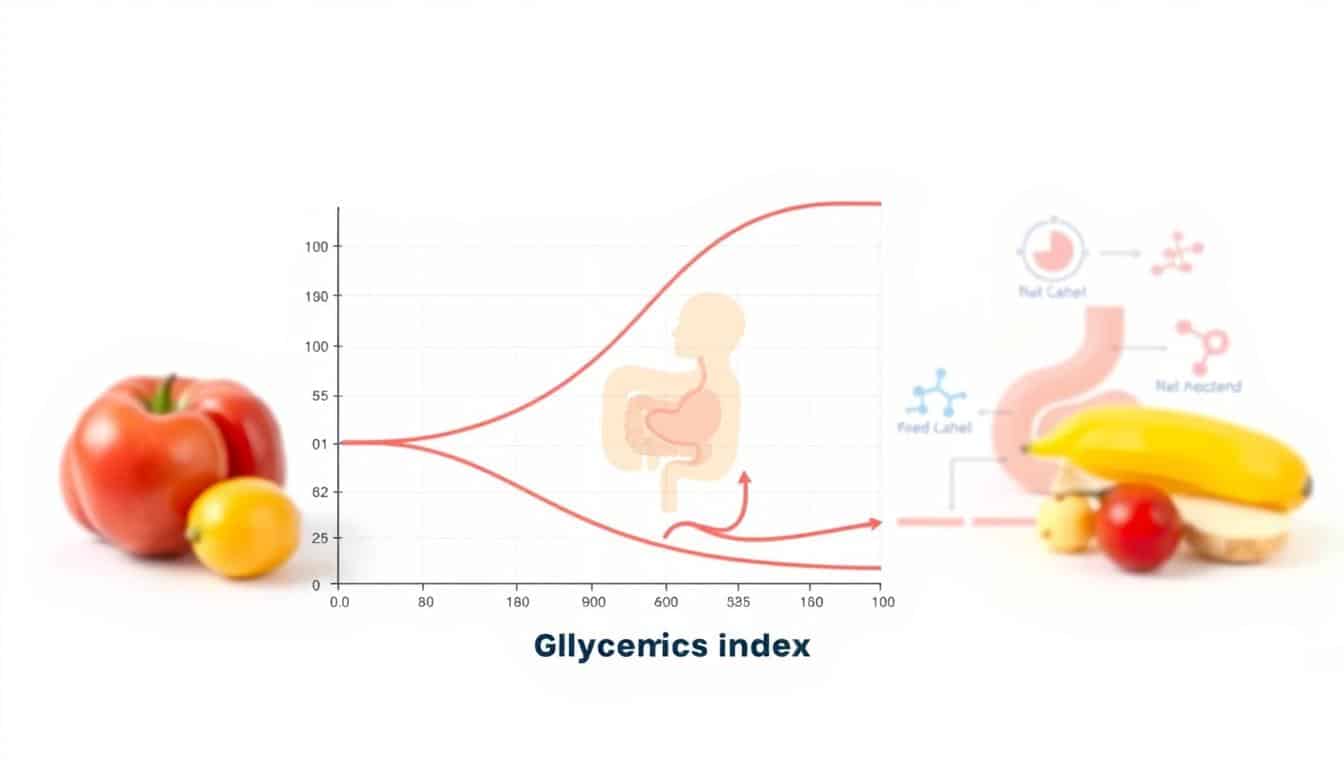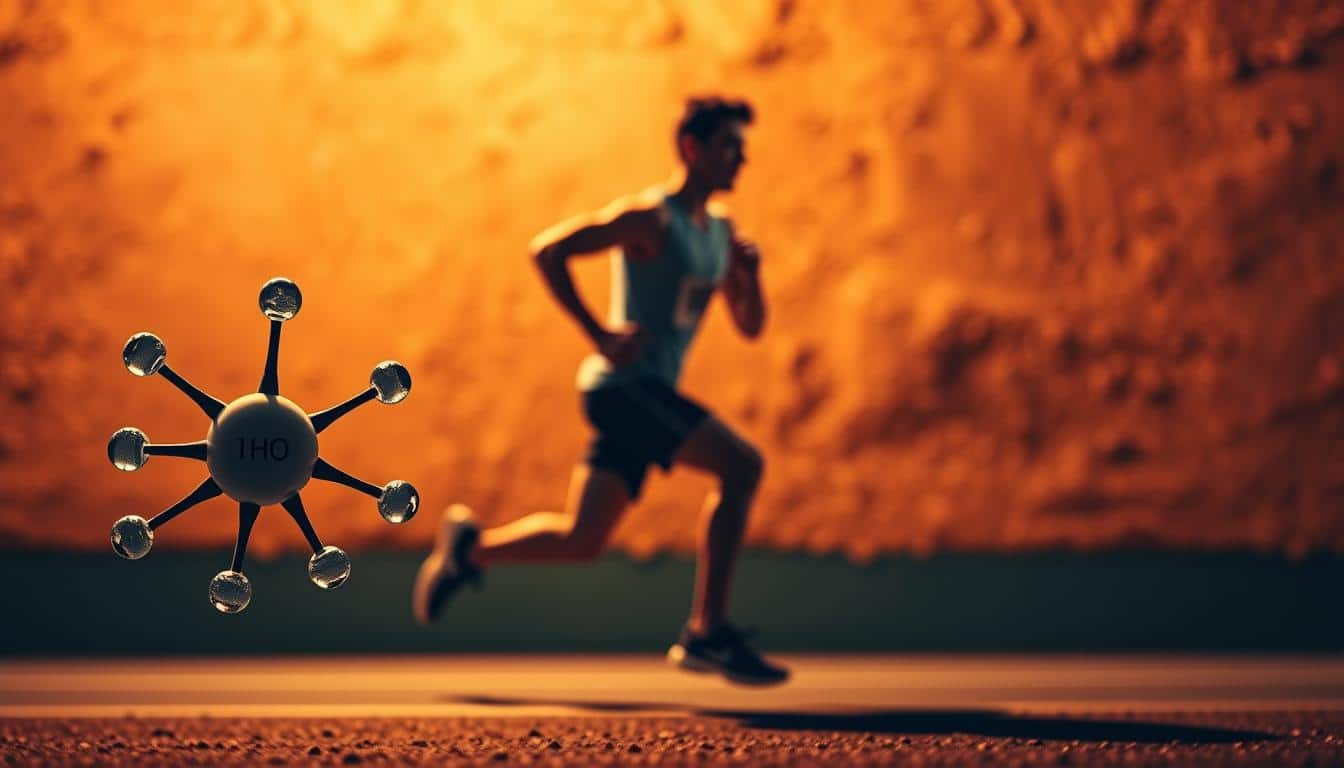Ever wonder why some meals leave you energized while others make you crash? The answer lies in the glycemic index. This simple tool helps you understand how carbs affect your energy levels. It’s not about cutting foods—it’s about timing them right to fuel your body when it needs it most.
Whether you’re hitting the gym or training for a marathon, smart carb choices can make a big difference. High and low GI foods serve unique purposes, from quick energy boosts to sustained stamina. Let’s explore how this approach can elevate your game and deliver real-world results.
What is the Glycemic Index?
Curious about how carbs affect your energy throughout the day? The glycemic index is a handy tool that helps you understand this. It ranks foods on a scale from 0 to 100 based on how quickly they raise your blood glucose levels compared to white bread, which has a value of 100.

Definition and Purpose of the Glycemic Index
The glycemic index measures how fast carbs in food enter your bloodstream. Foods with a high GI spike your energy quickly, while low GI options provide a slower, steadier release. This makes it a useful guide for managing energy levels throughout the day.
How the Glycemic Index is Measured
To determine a food’s GI, researchers compare how 50 grams of its carbohydrate affects blood glucose over two hours. The results are then ranked against white bread, which serves as the baseline at 100. This method ensures consistency across different foods.
Examples of High and Low Glycemic Index Foods
High GI foods, like rice cakes (78) and baked potatoes (85), give you a quick energy boost. On the other hand, low GI options, such as lentils (29) and apples (38), keep you fueled for longer. Even some surprising foods, like watermelon (72) and beets (64), fall into the high GI category.
How the Glycemic Index Affects Blood Sugar
Have you ever noticed how some foods make you feel full of energy while others leave you sluggish? The answer lies in how your body processes carbohydrates and converts them into blood sugar. Understanding this process can help you make smarter food choices for sustained energy.
The Relationship Between Carbohydrates and Blood Glucose
When you eat carbs, your body breaks them down into glucose, which enters your bloodstream. This is what fuels your muscles and brain. However, not all carbs are created equal. Some cause a rapid spike in blood sugar, while others provide a slower, steadier release.
How High and Low Glycemic Foods Impact Blood Sugar Levels
High GI foods, like rice cakes, quickly raise your glucose levels. This can give you a fast energy boost but may lead to a crash later. Low GI foods, such as oatmeal, release energy more slowly, keeping your blood sugar stable over time.
The Role of Fiber in Digestion and Absorption
Fiber plays a key role in how your body processes carbs. It slows down digestion, which helps regulate absorption and prevents sudden spikes in blood sugar. For example, an apple has a lower GI than apple juice because of its fiber content.
| Food | Glycemic Index | Effect on Blood Sugar |
|---|---|---|
| Rice Cakes | 78 | Quick spike, followed by a crash |
| Oatmeal | 65 | Steady energy release |
| Apple | 38 | Slow, sustained energy |
| Apple Juice | 44 | Moderate spike |
By choosing the right foods, you can manage your blood sugar levels effectively. This not only boosts your energy but also reduces the risk of long-term health issues like insulin resistance.
Glycemic Index and Athletic Performance
Want to know how your food choices can make or break your workout? The timing and type of carbs you eat can significantly impact your performance. Whether you’re training for a marathon or lifting weights, understanding how different foods affect your body is key to achieving your goals.
Why Athletes Should Understand the Glycemic Index
Carbs are your body’s primary fuel source during exercise. Knowing how quickly they’re digested helps you plan meals that align with your training needs. For example, low-GI foods like oats provide steady energy levels, perfect for endurance activities. On the other hand, high-GI foods can quickly replenish glycogen stores after intense workouts.
The Impact of Glycemic Index on Energy Levels During Exercise
Your choice of pre-workout meals can determine how long you can sustain high-intensity efforts. Low-GI foods are ideal for long sessions, as they release energy slowly. Marathoners often rely on foods like oatmeal to maintain stamina. For shorter, explosive activities like sprinting, high-GI snacks can provide a quick boost.
How Glycemic Index Influences Recovery After Exercise
Post-workout nutrition is crucial for recovery. High-GI foods, like chocolate milk, help restore glycogen levels 30% faster than low-GI options. This speeds up muscle repair and prepares your body for the next session. However, the ideal choice depends on your activity type and intensity.
| Activity | Pre-Workout Food | Post-Workout Food |
|---|---|---|
| Marathon | Low-GI Oats | High-GI Rice |
| Sprinting | High-GI Banana | High-GI Chocolate Milk |
| Weightlifting | Low-GI Apple | High-GI Sweet Potato |
Remember, there’s no one-size-fits-all approach. Tailor your carb intake to your specific training needs for optimal performance and recovery.
When to Eat High Glycemic Index Foods
Ever wondered how to time your meals for peak energy during workouts? High-GI foods can be your secret weapon when used strategically. They’re perfect for quick energy boosts and fast recovery, but timing is everything.
Benefits of High Glycemic Foods During and After Exercise
High-GI foods are great for refueling fast. They spike your blood glucose levels, giving you an instant energy boost. This is ideal during long workouts or right after training when your body needs to replenish glycogen stores quickly.
For example, eating jelly beans during an ultramarathon can keep you going. Post-workout, honey or raisins can help your muscles recover faster. Just remember, these foods are best reserved for intense activity windows.
Examples of High Glycemic Foods for Athletes
Not all high-GI foods are created equal. Some are better suited for athletes. Bagels, raisins, and honey are top picks. They’re easy to digest and provide quick energy without weighing you down.
Other options include white pasta, which is great for pre-game meals, and jelly beans for mid-race fuel. These choices are practical, portable, and effective for active individuals.
Timing High Glycemic Meals for Optimal Performance
When you eat high-GI foods matters as much as what you eat. For pre-workout, aim for a meal 3 hours before your session. White pasta is a solid choice here. It provides steady energy without spiking your blood glucose levels too early.
Post-workout, consume high-GI foods within 30 minutes. This is when your body absorbs nutrients fastest, helping you recover quicker. A bagel with honey or a smoothie with raisins can do the trick.
Remember, moderation is key. Avoid daily high-GI meals outside training windows to maintain stable energy levels and overall health.
When to Eat Low Glycemic Index Foods
Looking for ways to keep your energy steady during workouts? Low glycemic index foods might be the answer. These foods digest slowly, providing a steady release of energy. They’re perfect for pre-exercise meals and long training sessions.
Benefits of Low Glycemic Foods Before Exercise
Eating low foods before a workout can improve endurance by up to 20%. They help maintain stable blood sugar levels, preventing mid-session crashes. For example, almond butter on whole-grain toast is a great pre-cycling snack.
Lentils, with a GI of 29, are another excellent choice. They release energy slowly, keeping you fueled for hours. This makes them ideal for long runs or intense training sessions.
Examples of Low Glycemic Foods for Athletes
Here are some top picks for athletes:
- Peanuts (GI 13): A quick, portable snack.
- Grapefruit (GI 25): Refreshing and low in calories.
- Kidney beans (GI 29): Perfect for hearty meals.
These foods are not only nutritious but also easy to incorporate into your diet. Try them in salads, smoothies, or as standalone snacks.
How Low Glycemic Foods Sustain Energy Levels
Low glycemic index foods take longer to digest, providing energy over 2 to 4 hours. This contrasts with high-GI options, which spike and crash quickly. For morning training, a low-GI breakfast like oatmeal with berries can keep you going strong.
Here are three simple low-GI breakfast ideas:
- Greek yogurt with nuts and seeds.
- Whole-grain toast with avocado.
- Smoothie with spinach, banana, and almond milk.
For busy athletes, portable snacks like trail mix or apple slices with peanut butter are lifesavers. They’re easy to pack and provide sustained energy without the crash.
Glycemic Index and Nutrition Planning for Athletes
Struggling to plan meals that keep you energized all day? Understanding the glycemic load can help. It’s not just about what you eat but how it affects your energy over time. Let’s dive into how you can use this tool to optimize your nutrition and fuel your workouts effectively.
How to Incorporate Glycemic Index into Meal Planning
Start by setting a daily glycemic load goal of under 100. For example, two apples add up to just 16 GL. Pair high-GI foods with fats or proteins to lower their impact. Adding olive oil to bread, for instance, can reduce its overall GI value.
Here’s a simple 7-day meal plan with GI/GL values:
- Day 1: Oatmeal with berries (GL 10) and almond butter (GL 2).
- Day 2: Grilled chicken with quinoa (GL 13) and steamed veggies.
- Day 3: Whole-grain toast with avocado (GL 8) and a boiled egg.
Balancing High and Low Glycemic Foods for Performance
Not all high-GI foods are bad. They can be useful for quick energy boosts during intense workouts. The key is balance. Aim for a plate that’s 50% low-GI, 30% protein, and 20% high-GI. This formula ensures steady energy and optimal recovery.
For example, a pre-workout meal could include sweet potatoes (low-GI) and a small portion of white rice (high-GI). Post-workout, try a smoothie with banana (high-GI) and Greek yogurt (protein).
Common Mistakes to Avoid When Using the Glycemic Index
One big mistake is ignoring portion sizes. GI measures quality, but glycemic load considers quantity. Eating a large portion of low-GI food can still spike your blood sugar.
Another error is labeling all high-GI foods as unhealthy. Foods like watermelon have a high GI but are low in calories and packed with nutrients. Focus on the overall nutritional value of your meals, not just the GI number.
Lastly, don’t forget to pair carbs with fats or proteins. This combo slows digestion, keeping your energy levels stable throughout the day.
Glycemic Index and Long-Term Health
Have you ever thought about how your food choices today could shape your health tomorrow? The foods you eat don’t just affect your energy levels—they play a big role in your long-term well-being. Understanding the glycemic index can help you make smarter decisions that support your overall health.
How Glycemic Index Affects Weight Management
Struggling to manage your weight? Low-GI foods might be the key. They help keep your blood sugar steady, reducing cravings and overeating. Studies show that people who eat low-GI diets lose twice as much belly fat compared to those who don’t.
Foods like lentils, nuts, and whole grains digest slowly, keeping you full longer. This makes it easier to stick to a healthy eating plan without feeling deprived. By choosing low-GI options, you can support your weight goals naturally.
The Role of Glycemic Index in Preventing Diabetes
Did you know that low-GI diets can reduce your risk of type 2 diabetes by 25%? These foods prevent sudden spikes in blood sugar, which helps your body manage insulin more effectively. Over time, this can protect you from developing diabetes.
Foods like beans, oats, and vegetables are great choices. They provide steady energy without overwhelming your system. Making these swaps can be a simple yet powerful step toward better health.
Other Health Benefits of Low Glycemic Foods
Low-GI foods do more than just manage weight and prevent diabetes. They also improve heart health by lowering LDL cholesterol by 8-12%. This reduces your risk of heart disease and supports overall well-being.
Here are five heart-healthy low-GI superfoods to add to your diet:
| Food | Glycemic Index | Health Benefits |
|---|---|---|
| Quinoa | 53 | Rich in protein and fiber |
| Sweet Potatoes | 54 | High in vitamins A and C |
| Chickpeas | 28 | Excellent source of plant-based protein |
| Berries | 25-40 | Packed with antioxidants |
| Almonds | 0 | Healthy fats and magnesium |
By incorporating these foods into your meals, you can enjoy their benefits while supporting your long-term health. Plus, understanding the glycemic index can help you make informed choices that keep you energized and healthy for years to come.
Conclusion
Ready to take your fueling strategy to the next level? Timing is everything when it comes to carbs. Use high-GI options for quick energy during or after workouts. Stick to low-GI foods for steady stamina before training. Always pair your meals with hydration for optimal results.
Your body is unique, so tailor your carb intake to your needs. Start small by adjusting one meal at a time. Over 2-3 weeks, you’ll notice a difference in your energy and performance.
Take the first step today. Plan your meals with nutrition in mind, and watch how it transforms your game. You’ve got this!


